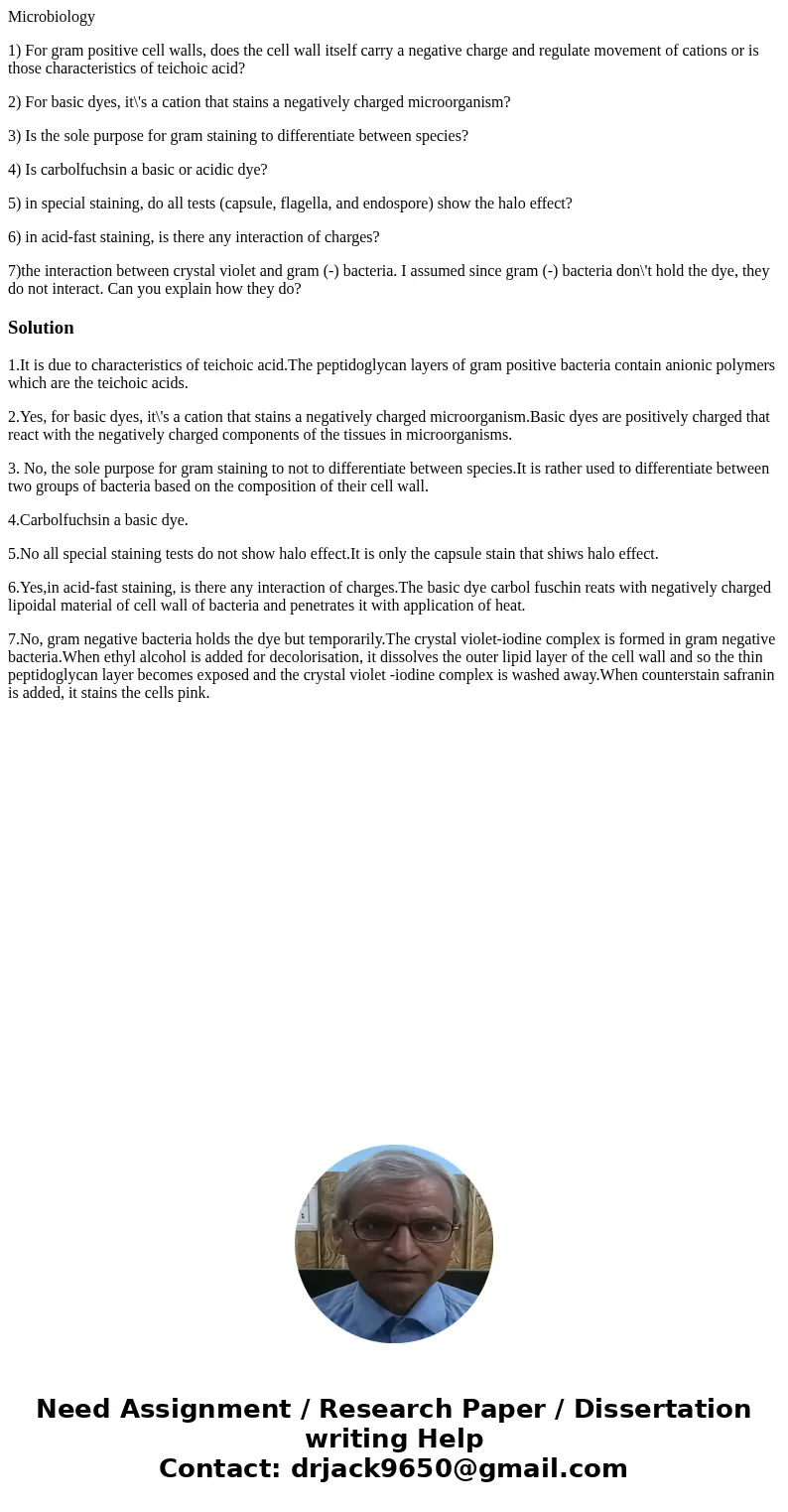Microbiology 1 For gram positive cell walls does the cell wa
Microbiology
1) For gram positive cell walls, does the cell wall itself carry a negative charge and regulate movement of cations or is those characteristics of teichoic acid?
2) For basic dyes, it\'s a cation that stains a negatively charged microorganism?
3) Is the sole purpose for gram staining to differentiate between species?
4) Is carbolfuchsin a basic or acidic dye?
5) in special staining, do all tests (capsule, flagella, and endospore) show the halo effect?
6) in acid-fast staining, is there any interaction of charges?
7)the interaction between crystal violet and gram (-) bacteria. I assumed since gram (-) bacteria don\'t hold the dye, they do not interact. Can you explain how they do?
Solution
1.It is due to characteristics of teichoic acid.The peptidoglycan layers of gram positive bacteria contain anionic polymers which are the teichoic acids.
2.Yes, for basic dyes, it\'s a cation that stains a negatively charged microorganism.Basic dyes are positively charged that react with the negatively charged components of the tissues in microorganisms.
3. No, the sole purpose for gram staining to not to differentiate between species.It is rather used to differentiate between two groups of bacteria based on the composition of their cell wall.
4.Carbolfuchsin a basic dye.
5.No all special staining tests do not show halo effect.It is only the capsule stain that shiws halo effect.
6.Yes,in acid-fast staining, is there any interaction of charges.The basic dye carbol fuschin reats with negatively charged lipoidal material of cell wall of bacteria and penetrates it with application of heat.
7.No, gram negative bacteria holds the dye but temporarily.The crystal violet-iodine complex is formed in gram negative bacteria.When ethyl alcohol is added for decolorisation, it dissolves the outer lipid layer of the cell wall and so the thin peptidoglycan layer becomes exposed and the crystal violet -iodine complex is washed away.When counterstain safranin is added, it stains the cells pink.

 Homework Sourse
Homework Sourse